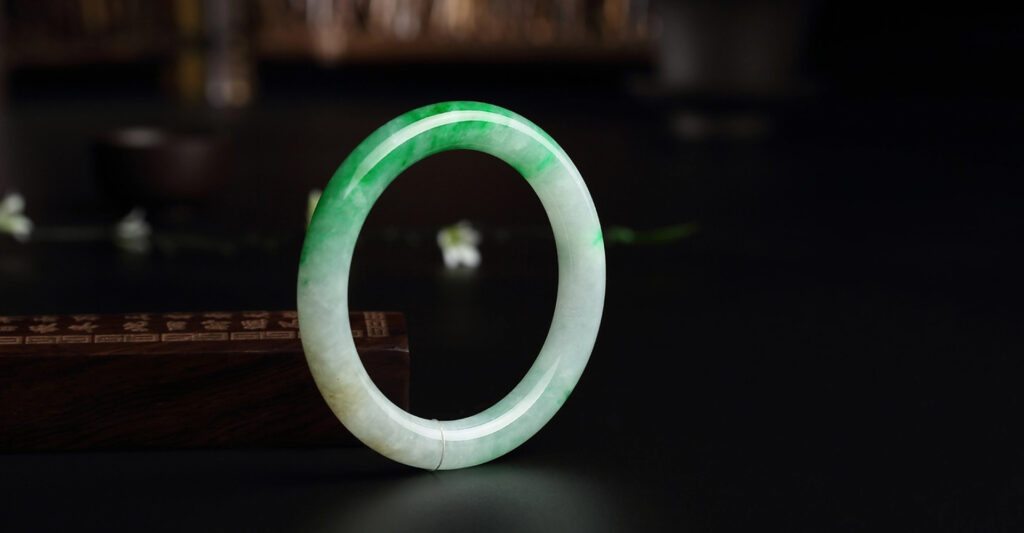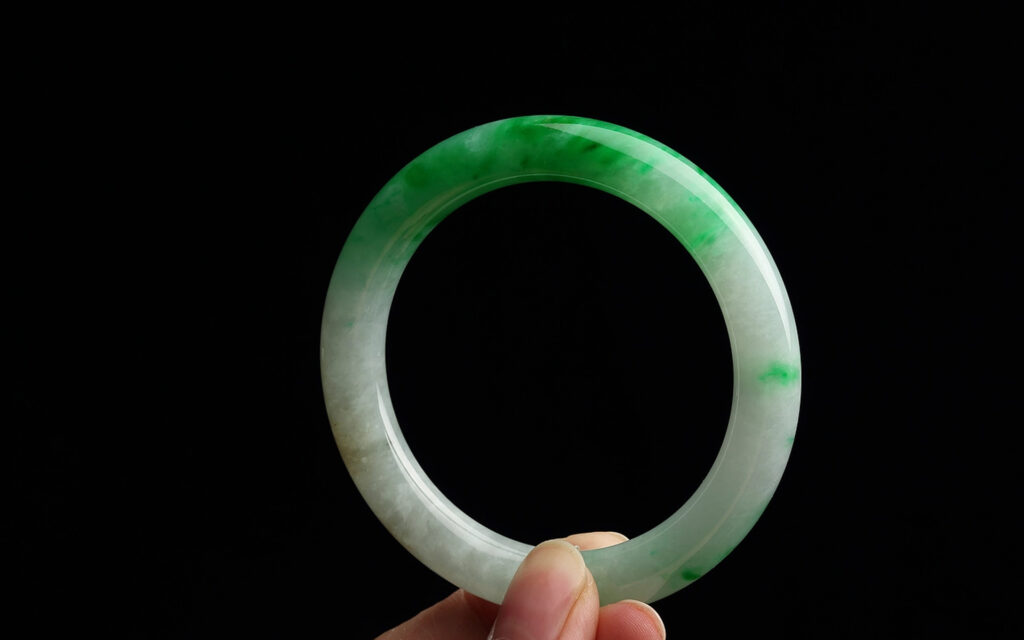The Chinese love for jade has deep historical roots. In our culture, jade embodies profound meanings—it symbolizes faith, power, wealth, and aesthetic appreciation, while also representing the essence of heaven and earth. However, when collecting Hetian jade, we often face the challenge of distinguishing genuine pieces from counterfeits, as the market is flooded with imitations. Today, in just a few minutes, we’ll share some practical techniques for distinguishing genuine from fake Hetian jade.

I. Common Types of Fake Hetian Jade
01 Outer Mongolia Material: Looks Authentic but Is Actually Fake
Outer Mongolia material, also known as lava jade, is actually worthless emulsified glass. As a synthetic material, prolonged wearing of this “jade” offers no health benefits. When purchasing jade, we must keep our eyes wide open.
Ironically, the term “Outer Mongolian material” doesn’t refer to jade from Mongolia but is industry slang used to deceive novices and the uninitiated. If you encounter vendors selling this material, walk away immediately.
02 Afghan Jade: The Killer of Hetian Jade
Afghan jade, also known as “Afghan material” in the trade, was once considered the “killer” of Hetian jade. It is essentially a relatively attractive marble that cannot compare to Hetian jade in terms of texture, structure, or hardness. Even the raw stone of Afghan jade reveals it to be merely a stone, not true jade.
Unlike Outer Mongolian jade, Afghan jade is a natural stone that poses no harm to the human body with long-term wear. It is affordable, with a bracelet costing a few hundred yuan, making it suitable for casual wear and handling. However, from a collectible value perspective, it is virtually negligible.
03 Xiuyan Jade: A High-End Imitation, Yet Still Jade
Another high-end imitation of Hetian jade is Xiuyan jade. Xiuyan jade, also known as serpentine jade, is named after its origin in Xiuyan, Liaoning Province. Abundant in supply and diverse in color, it includes valuable varieties and serves as an ideal material for jade carving.
Xiuyan jade holds significant status in China’s jade cultural history, being one of the earliest developed and most historically enduring jade types. As one of China’s Four Famous Jades, it possesses inherent value, though it still falls short of Hetian jade in comparison.

II. Quick Identification of Hetian Jade
01 Recognizing Authentic Hetian Jade Characteristics
Internal Structure: Hetian jade exhibits a fibrous, interwoven internal structure resembling the felt used in calligraphy brushes.
Density and Handfeel: Hetian jade possesses high density, creating a distinct, weighty sensation when held.
Sound Characteristics: When tapped, Hetian jade produces a clear, resonant, and lingering sound, reminiscent of wind chimes.
Three Key Points for Identifying Hetian Jade
02 Examine the Structure
Prepare a professional flashlight to observe the jade’s structure.
Hetian Jade: The denser the fibrous interweaving within its structure, the higher the quality of the jade.
Outer Mongolian Material: Exhibits distinct artificial traces—bubbles. Even highly realistic counterfeits may mimic fibrous structures, yet they cannot eliminate these artificial marks and fail to achieve the fine fiber density characteristic of Hetian jade.
Afghan jade: Exhibits banded patterns. Even finely textured Afghan jade reveals faint banding under flashlight inspection.
Xiuyan jade: Composed of intricate horizontal and vertical structures interspersed with speckled patterns resembling snakeskin, hence its alternative name “serpentine stone.”
If distinguishing Xiuyan jade from Hetian jade proves challenging, gently scratch the surface of each with a small knife. If no changes or marks appear, it is Hetian jade; slight scratches indicate Xiuyan jade.
03 Weighing
Among Outer Mongolian jade, Afghan jade, Xiuyan jade, and Hetian jade, Hetian jade possesses the highest density. For identical volumes, Hetian jade feels heavier and more substantial in the hand. If it feels light and insubstantial, it is definitely not Hetian jade.
04 Sound Testing
You can record the distinct sounds produced when different materials collide and listen to them. However, sound identification is challenging for non-professionals to master accurately. Since the sound produced depends heavily on the material’s shape, thickness, and the striking tool used, this method should only serve as a reference.
05 Get Professional Appraisal
The most reliable approach is to have it appraised by a national authoritative appraisal institution—convenient and efficient. Below are examples of appraisal results for various materials:
Appraisal results for Hetian jade will explicitly state “Hetian jade.”
For Afghan jade, the result typically reads “calcite” or “carbonate jade.”
For Xiuyan jade, the result will clearly state “Xiuyan jade.”
That concludes the basic methods for identifying Hetian jade! To those who’ve read this article, may you recognize and collect Hetian jade wisely, avoid pitfalls, and may every home be graced with beautiful jade!